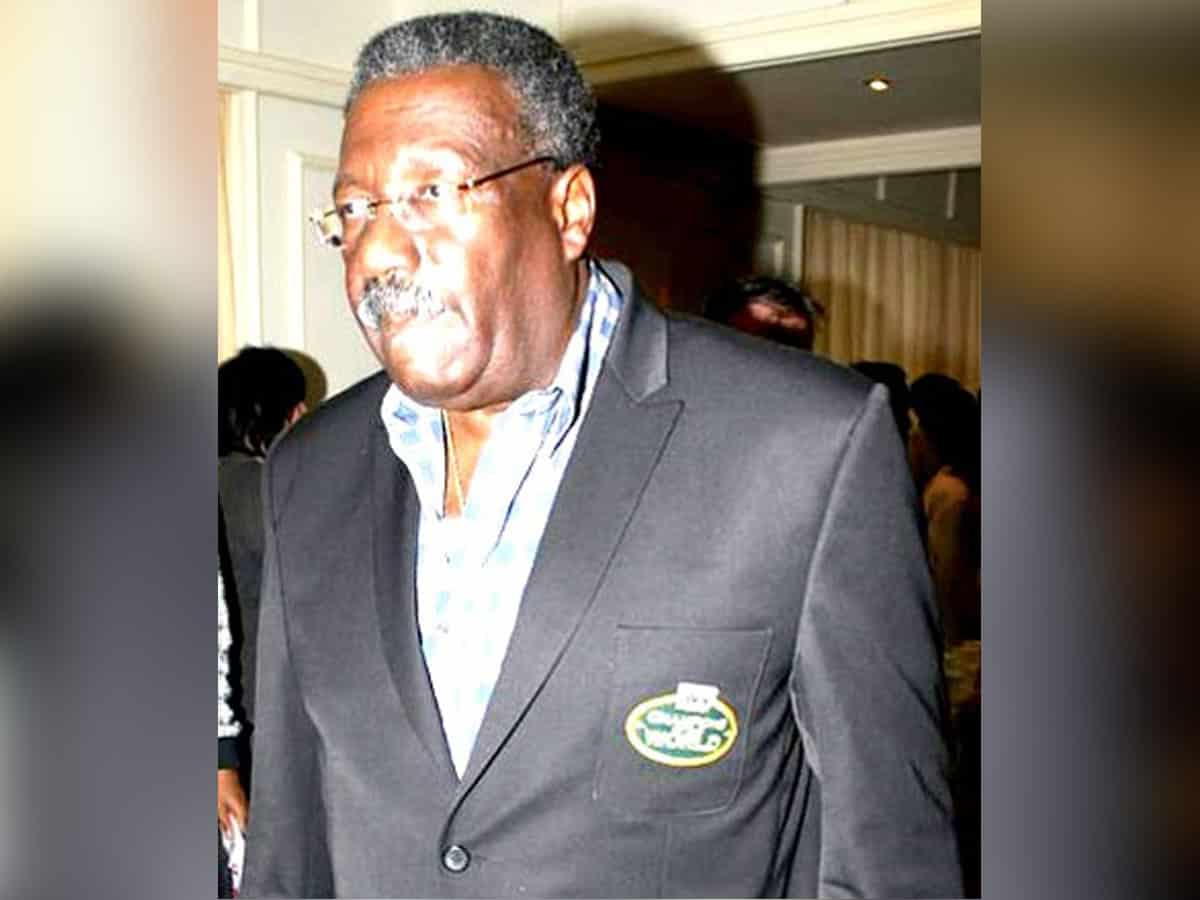
The legendary captain of the West Indies, Sir Clive Lloyd, is a very senior citizen now. He celebrated his 80th birthday on August 31st. Not only was he a charismatic leader of a great team he was also one of the most influential figures in the history of Test cricket. Many of the ideas which he implemented set a worldwide trend. His vision enabled West Indies to rule the cricket world for about two decades and it was not surprising that the decline of West Indies began with the departure of Clive Lloyd.
He was born in Georgetown in Guyana and became the captain of his school team when he was only 14 years old. Leadership came to him naturally. When he was in school, he once tried to break up a fight between two friends and in the process he suffered an injury to his eyes. Thereafter he had to wear spectacles.
He grew up to be 6 feet 5 inches and did not look like a cricketer. With his big spectacles, thick moustache, and burly physique he did not fit into the image of an agile and fit athlete. But as they say, appearances can be deceptive. As a fielder, Lloyd could sprint like an Olympic athlete and scoop up the ball before it reached the boundary.
Important matches in India
Lloyd made his Test debut in India during the West Indies tour of 1966. He scored 82 in the first innings and 78 not out in the second. During the 1975 tour of India, in the fifth Test match in Mumbai, Lloyd compiled his highest score of 242 not out. This helped the West Indies win the final Test match and the series. It was also the first sign that India’s famous spinners were fading.
Sparkling display in Hyderabad
Lloyd used his powerful physique to hit the ball with tremendous force as a batsman. In 1974, Hyderabad’s cricket fans got a view of his muscle power in a three-day match between South Zone and the West Indies at the Lal Bahadur stadium. This correspondent and his friends who witnessed that display of fireworks have not forgotten it even though 50 years have passed.
On that occasion, four players from Hyderabad were in the south zone team. They were M L Jaisimha, K Jayantilal, Syed Abid Ali and Abdul Hai. South Zone batted first and scored 313 helped by centuries from G R Vishwanath and Brijesh Patel.
In reply West Indies declared at 337 for one. Opener Gordon Greenidge retired hurt for 55 but Leonard Baichan and Alvin Kallicharan scored centuries.
Venkat felt South Zone was safe
South Zone’s second innings lasted well into the third and last day. When it had reached 186 for eight, South Zone skipper S Venkataraghavan declared the innings closed. West Indies was given a target of 183 runs in 20 mandatory overs and a few minutes so Venkat felt it was safe to declare.
But when West Indies changed the batting order and Clive Lloyd walked out to open the innings with Gordon Greenidge, there was a tremendous roar from the spectators. Because the West Indies was indicating that there would be a battle royal with all the heavy artillery in action.
And so it turned out to be. From the first ball, the two openers began hitting all parts of the ground. In those days there was no T20 cricket. In the T20 format, there are restrictions on bowlers and field placements, and the boundaries are reduced. So scoring fast runs is not as difficult as it used to be earlier.
All fielders in the deep
In the 1970s there were no fielding or bowling restrictions. A captain could place all his fielders in the deep to save the flow of runs and catch the lofted hits. That is exactly what Venkataraghavan did. Not a single player was anywhere near the pitch. All were pushed back almost to the boundary line.
Yet the West Indies tempo never ceased. Lloyd and Greenidge were unstoppable that day. Again and again, the ball flew off the bat like a bullet. New ball bowler Abid Ali gave away 41 runs in the first three overs and was taken off. Even E A S Prasanna’s three overs cost 30 runs.
Seam bowler Vijaykumar got the wicket of Greendige but at the cost of 64 runs in 9 overs. After Greenidge departed, Kallicharan walked in. While Lloyd used his brute strength, the smaller sized Kallicharan used his superb timing and placements.
Spectators showed sportsmanship
After the West Indies raced to a nine-wicket victory, the crowd applauded even though the home team had lost. The Hyderabad crowd knew that they had seen something special on its soil. Their sense of sportsmanship was quick to appreciate and applaud the greatness of Lloyd and his men from the Caribbean isles.



